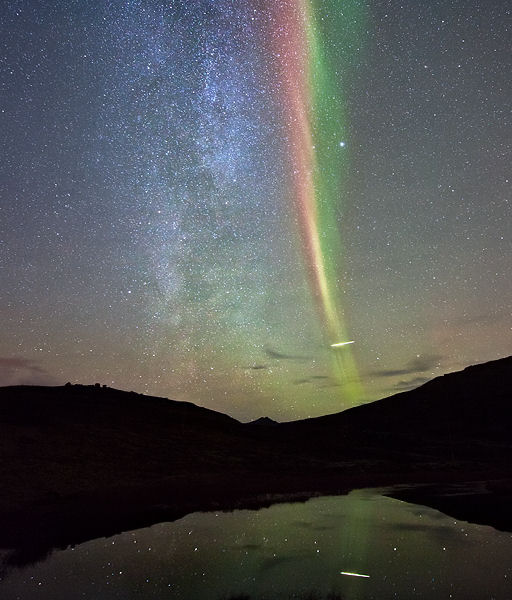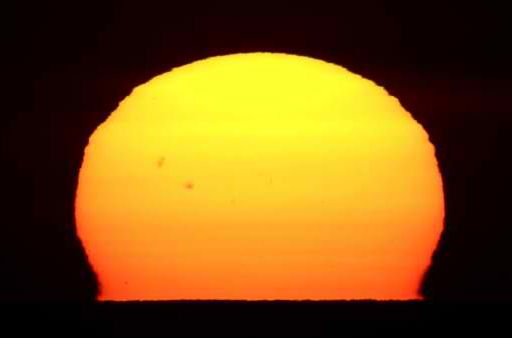They came from outer space--and you can have one! Genuine meteorites are now on sale in the Space Weather Store. | | |
SUNSET CONJUNCTION: When the sun goes down tonight, look west into the twilight. Venus and Mercury are in conjunction less than 3 degrees apart. Binoculars may be required to see Mercury shining alongside the much-brighter Venus. A 2% crescent Moon is there, too, but only black-belt observers will find it in the glowing sky just below Mercury. [sky map]
Conjunction images: from David Marshall of Cave Hill, St. Michael, Barbados; from Matt Zengerer of Adelaide, South Australia;
48 HOURS LATER: People in the United States are still talking about the spooky red auroras ignited by a CME on Oct. 24th; Northern Lights were sighted as far south as Texas, Louisiana, Arkansas and Alabama. 48 hours later, the show was over in the USA, but not in Scandinaviia where residual auroras continued to flicker around the Arctic Circle. Norwegian photographer Ole C. Salomonsen took this picture on Oct. 26th:

"I was out shooting the Milky Way when I got a nice surprise," says Salomonsen. "These amazing auroras were still dancing over Tromsø. Several meteors cut across the sky during the photo-shoot, so I was able to capture a fireball, the Northern Lights and the Milky Way in a single exposure!"
More such photo-ops are in the offing. The sun is waking up from one of the deepest solar minima in a century, and new Solar Cycle 24 seems to be rapidly gaining strength. Forecasters expect a new "Solar Max" in 2012-2013 with many more aurora storms between now and then. Stay tuned. Aurora alerts: text, voice.
October 2011 Aurora Gallery
[previous Octobers: 2010, 2009, 2008, 2007, 2006, 2004, 2003, 2002]
SUNSPOT SUNSET: Now that the aurora storm has subsided, many people are wondering When it will happen again? The answer could lie in the sunset. James W. Young of Cannon Beach, Oregon, took this picture at the end of the day on Oct. 25th:

"Sunspot 1330 was clearly visible on the face of the sun as it set directly into the Pacific Ocean," says Young.
The big sunspot has a "beta-gamma" magnetic field that harbors energy for strong flares. As the active region turns toward Earth this week, it becomes the most likely source of the next CME to hit our planet. NOAA forecasters estimate a 10% chance of M-class solar flares during the next 24 hours.
more images: from Dennis Simmons of Brisbane, Qld, Australia; from Tom Michalik of Lynchburg, Virginia

